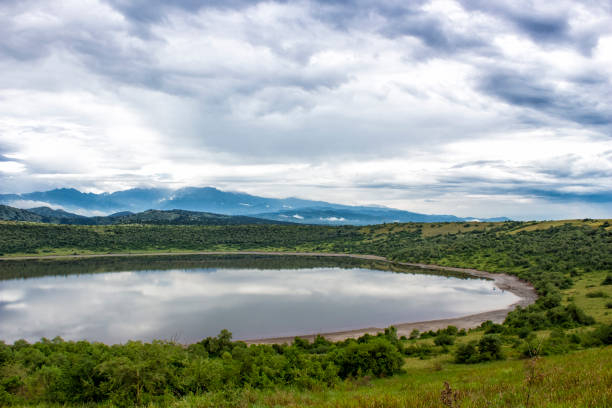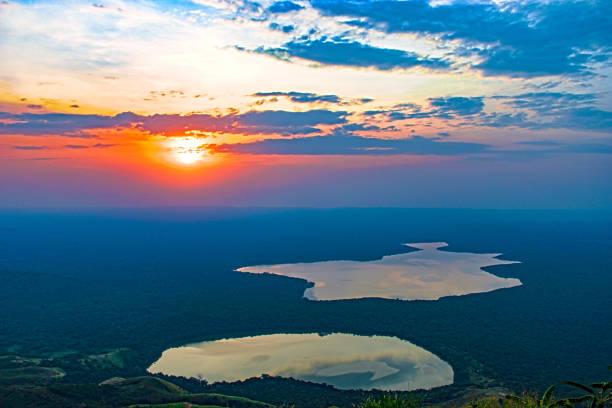To swim in a crater lake
Crater lakes were produced by volcanic activity 8000 years ago. A volcanic crater lake is a lake that developed as a result of a volcanic explosion. Uganda has several volcanic mountains, which cause eruptions. Unlike other volcanoes, which form cones at the summit of the mountain. These explosion craters spew lava, ash, and boulders into the surrounding surroundings, creating a vast basin in their wake. These basins gradually fill with water, becoming the crater lakes we know today. Crater lakes provide stunning vistas and a lush green environment. The majority of these crater lakes may be located in western Uganda. Crater lakes may be visited and are excellent photographic locations.
There are dozens of volcanic crater lakes in and around the Ndali-Kasenda area of western Uganda, but the jewel is the glittering Kyaninga. The lake is a mesmerizing granite blue, fringed with woodland and crisscrossed by gliding hornbills. It's semi-active, so despite being 225 meters deep in places, the water temperature is a nice 21 degrees. Add to it the fact that it is one of East Africa's few bilharzia-free lakes, and you have the ideal setting for some wild swimming. Kyaninga Lodge's beautiful, thatched bungalows are spread along a hill overlooking the lake. The spacious accommodations all boast breathtaking views, and local activities include an early morning Crater Walk and time spent with community elders at a neighboring farm.
Lake Katwe is located at the highest point of the Mweya Peninsula's Queen Elizabeth National Park. It is the major Crater Lake and Uganda's primary salt distributor. It is 3,265 feet deep and, because to its saltiness, does not attract any aquatic creatures. Elephants, buffalos, and flamingos may be observed near the baboon cliff. Lake Katwe is a good place to halt on your trip to Queen Elizabeth National Park. Enjoy a panoramic view of the Rwenzori Mountains, Lake George and Lake Edward, as well as the Kazinga canal. Your trekking experience will be enhanced by the Katwe explosion craters. The trip to the top of the globe will take you to additional crater lakes via towns and tea gardens. You won’t miss Lake Kitagata which is fed by salty water from a salty hot spring and the clear view of the Kyemango crater.












